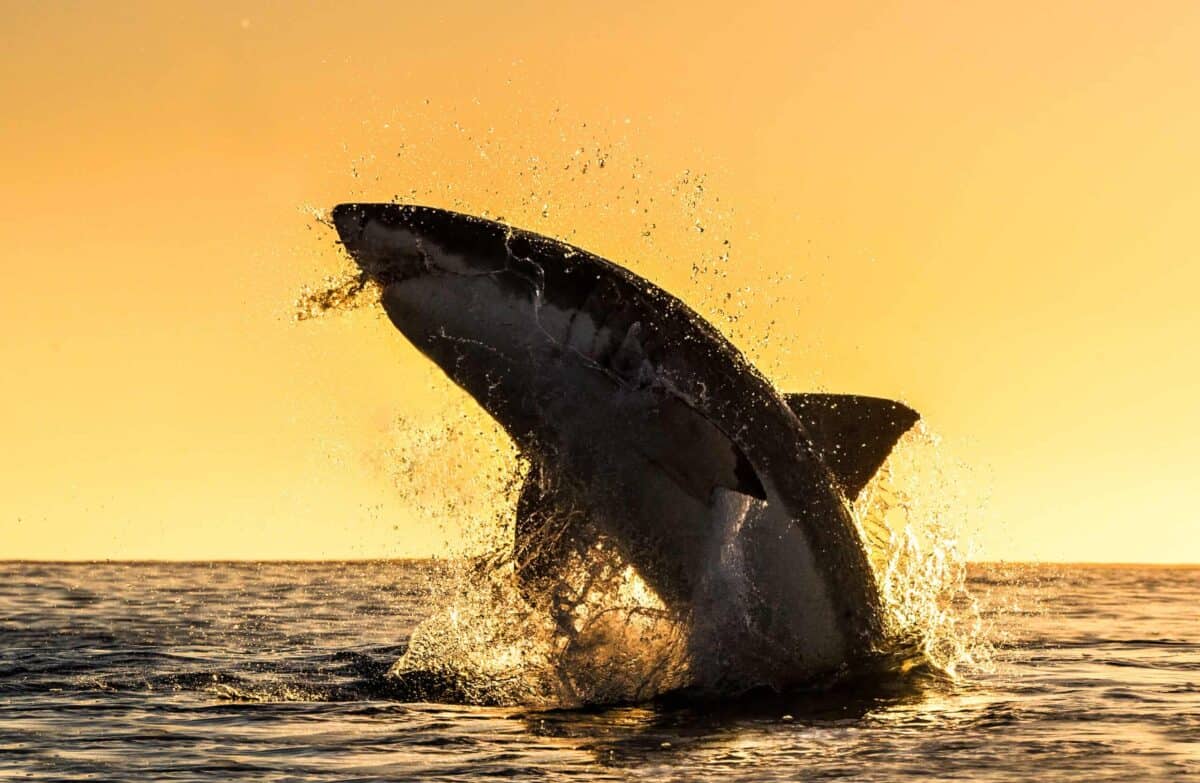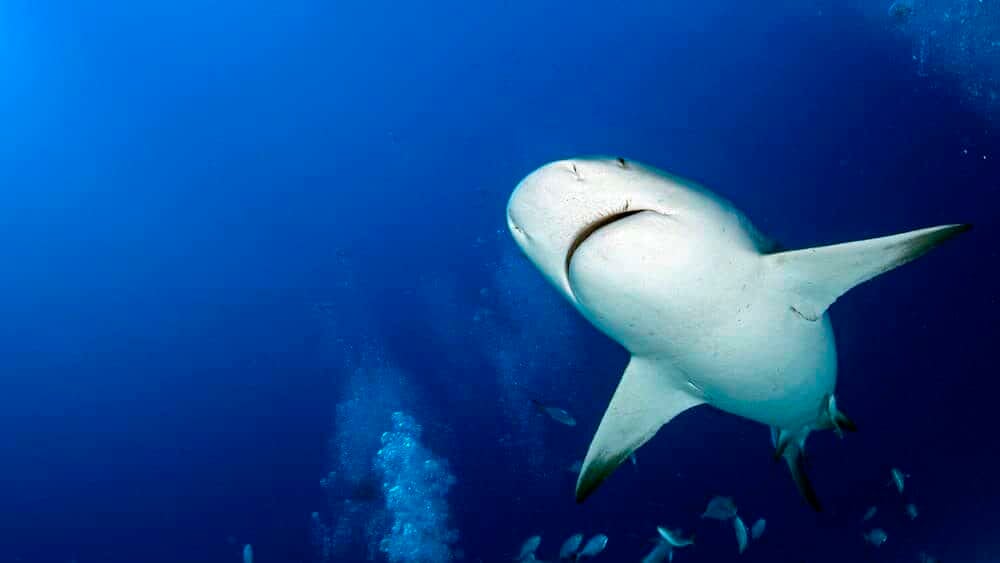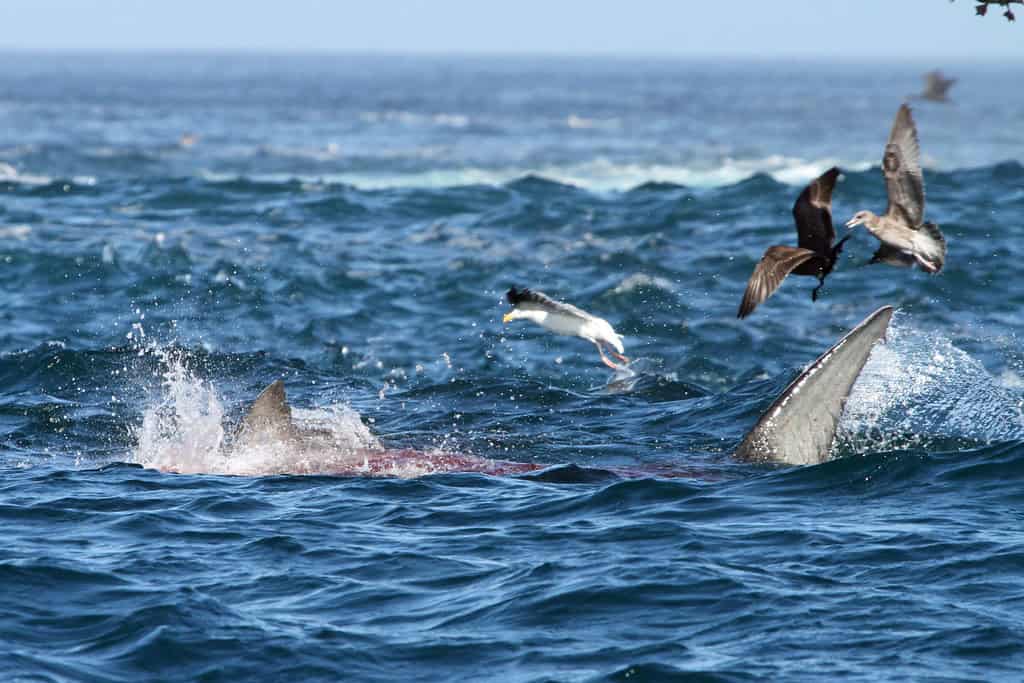Picture this: you’re enjoying a perfect day at the beach, swimming in clear blue waters when suddenly you spot the unmistakable silhouette of a shark. Your heart races, your mind floods with scenes from “Jaws,” and every instinct screams to panic. But what if I told you that this almost universal reaction might be the worst thing you could do? Despite their fearsome reputation, shark encounters rarely result in attacks, and understanding how to respond appropriately could make all the difference. This article explores why keeping calm during a shark encounter is crucial, the reality behind shark behavior, and practical strategies to ensure safety while sharing the ocean with these misunderstood predators.
Understanding Shark Behavior: They’re Not Out to Get You

Contrary to popular belief and Hollywood depictions, sharks do not actively hunt humans as prey. Most sharks primarily feed on fish, marine mammals, and other sea creatures that are part of their natural diet. Human beings, with our bony bodies and relatively low fat content, simply don’t make for an appealing meal to sharks. The majority of shark species have evolved over 400 million years to be efficient predators of specific prey types, and humans don’t fit their preferred menu.
Research from the International Shark Attack File shows that most shark “attacks” are actually investigatory bites—cases where a shark is curious and uses its mouth to explore an unfamiliar object, much like how humans might use their hands. Once they realize we’re not their usual food, they typically release and swim away. This explains why many shark bites aren’t fatal; the shark isn’t trying to consume the person but is merely investigating. Understanding this fundamental aspect of shark behavior helps demystify these creatures and reduce unnecessary fear.
The Statistics: Shark Attacks Are Extremely Rare

When we examine the data, the fear of sharks appears vastly disproportionate to the actual risk they pose. Globally, there are approximately 70-100 shark attacks annually, with only 5-10 resulting in fatalities. To put this in perspective, you have a 1 in 3.7 million chance of dying from a shark attack. You’re more likely to die from a lightning strike (1 in 79,746), a bee sting (1 in 59,507), or even a vending machine accident (1 in 112 million).
In the United States, which records among the highest number of shark incidents worldwide, coastal states like Florida may see 20-30 incidents annually, yet most are minor. Meanwhile, billions of human-shark interactions occur every year without incident as people swim, surf, and dive in waters where sharks live. These statistics clearly demonstrate that shark encounters rarely escalate to attacks, and your odds of having a negative interaction are incredibly small, even if you do spot one while swimming.
Panic Makes Things Worse: The Science Behind Staying Calm

When faced with a shark, panicking could potentially transform a neutral encounter into a dangerous one. Rapid, erratic movements in the water mimic the behavior of injured prey, which can trigger a predatory response in sharks. These predators have evolved to detect distress in potential prey, and splashing frantically sends exactly the wrong signals. Additionally, panic often leads to poor decision-making and exhaustion, which further compromises your safety in the water.
From a physiological perspective, the fight-or-flight response triggered by panic increases your heart rate and respiratory rate, potentially causing hyperventilation or shallow water blackout if you’re snorkeling or diving. Maintaining composure allows you to think clearly, assess the situation rationally, and take appropriate action. Research in marine biology consistently shows that calm, deliberate movements are less likely to attract shark attention or provoke investigatory behavior than panicked thrashing.
Most Sharks You’ll Encounter Are Harmless Species

Of the more than 500 species of sharks that exist worldwide, only about a dozen have been involved in unprovoked attacks on humans. The vast majority of sharks you might encounter while swimming pose virtually no threat. Species commonly seen near shores, such as nurse sharks, leopard sharks, and reef sharks, are generally docile and uninterested in humans. Many of these species feed on small fish, crustaceans, or plankton and have neither the inclination nor the dentition to harm people.
Even larger species that swimmers might encounter, such as whale sharks and basking sharks, are filter feeders that consume tiny organisms and are completely harmless to humans despite their impressive size. Often, what swimmers mistake for dangerous sharks are actually harmless species, or even other marine animals like dolphins. Learning to identify common shark species in your swimming area can help alleviate fears and allow you to respond appropriately to different types of shark encounters.
What Actually Triggers Shark Attacks

Understanding what can potentially trigger aggressive behavior in sharks is crucial for preventing negative interactions. Most documented shark incidents fall into several categories: mistaken identity (sharks confusing humans for natural prey, especially in murky water or low visibility conditions), territorial defense (particularly during breeding seasons), and investigatory bites (sharks “tasting” an unfamiliar object). Human activities that can increase risk include swimming at dawn or dusk when many shark species feed, swimming near fishing activities or where bait is present, and wearing high-contrast clothing or shiny jewelry that may resemble fish scales.
Areas with seal colonies or large schools of fish naturally attract sharks, so swimming in these locations increases the chances of an encounter. Similarly, areas with steep drop-offs where deep-water species can venture closer to shore present higher risks. Blood in the water from spearfishing, menstruation, or open wounds might also attract certain species, though this risk is often overstated in popular media. By understanding these triggers, swimmers can make informed decisions about when and where to enter the water, significantly reducing already minimal risks.
How to Respond If You See a Shark

If you spot a shark while swimming, the most important rule is to remain calm and avoid sudden movements. Maintain your position or slowly back away while keeping the shark in sight. Don’t turn your back on the shark, as this makes it difficult to monitor its behavior. If you’re diving or snorkeling, try to maintain a horizontal body position at the surface rather than dangling limbs vertically in the water, which can resemble prey. Moving deliberately and smoothly toward the nearest exit point—be it the shore, a boat, or a reef—is your best course of action.
If the shark appears to be curious or circling, experts recommend maintaining eye contact, as sharks are less likely to approach when being watched. In the unlikely event that a shark approaches aggressively, be prepared to defend yourself by using any equipment you have (such as a camera, dive gear, or surfboard) as a barrier. Target sensitive areas like the eyes, gills, or snout if contact becomes unavoidable. Remember that most sharks will break off an encounter after realizing you’re not prey, so your goal is to discourage interest rather than engage in a prolonged confrontation.
Swimming in Groups: Safety in Numbers

One effective strategy for reducing shark encounter risks is swimming in groups. Sharks are more likely to approach lone individuals than groups of people. This safety measure works for several reasons: groups create more noise and disturbance in the water, making their presence more obvious and less likely to surprise a shark; multiple people can keep watch in different directions, increasing the chances of early shark detection; and in the extremely rare event of an aggressive approach, others can assist or summon help.
Research on shark behavior suggests that predatory species often target isolated individuals when hunting their natural prey, as this reduces potential resistance and confusion. The same principle applies to human-shark interactions. Additionally, swimming in designated areas with lifeguard supervision adds another layer of safety, as these professionals are often trained to spot sharks and other hazards. Many popular beaches now employ shark spotting programs that use lookouts, drones, or other technologies to identify sharks and warn swimmers before encounters occur.
The Ecological Importance of Sharks

Understanding the vital role sharks play in marine ecosystems can help foster appreciation rather than fear. As apex predators, sharks regulate the populations of species below them in the food chain, maintaining the balance and health of marine communities. They remove weak or sick individuals from prey populations, strengthening these species’ genetic pools. Research has shown that coral reefs with healthy shark populations are more resilient to environmental stresses than those where sharks have been depleted.
Unfortunately, shark populations worldwide face severe threats from overfishing, with an estimated 100 million sharks killed annually for their fins, meat, and other products. Climate change and habitat destruction further imperil these ancient creatures. Many species now face extinction risk, with some populations declining by over 90% in recent decades. When we view sharks as dangerous monsters to be feared and eliminated rather than as essential components of ocean health, we contribute to their decline. Developing a more nuanced understanding of sharks—recognizing both their ecological importance and the minimal risk they pose to humans—encourages conservation efforts and more harmonious coexistence in marine environments.
Technological Advances in Shark Safety

Recent years have seen significant advances in technologies designed to reduce negative shark-human interactions. Personal deterrent devices now available to swimmers and surfers include electronic repellents that create electromagnetic fields around the wearer, disrupting the sharks’ sensitive electroreception organs. Other innovations include special wetsuits and surfboards designed with patterns and colors that sharks have difficulty seeing or that don’t resemble their natural prey. While no technology offers 100% protection, scientific testing suggests these approaches can significantly reduce encounter risks.
On a larger scale, many beaches worldwide have implemented monitoring systems ranging from aerial patrols and drones to sonar detection networks and tagged shark tracking programs. Apps now allow beach-goers to receive real-time alerts about shark sightings in their area. Australia, South Africa, and parts of the United States have been at the forefront of developing these technologies, often as alternatives to controversial shark culling programs. As these technologies continue to improve and become more accessible, they provide additional layers of protection that allow people to enjoy ocean activities with greater confidence while respecting sharks’ place in the marine environment.
Cultural Perspectives: How “Jaws” Changed Everything

The 1975 film “Jaws” fundamentally altered public perception of sharks, creating a cultural phenomenon that continues to influence how people view these creatures nearly five decades later. Before the film’s release, fear of sharks existed but wasn’t widespread; afterward, sharks became synonymous with terror in the public imagination. This shift had real consequences: shark hunting tournaments increased, coastal tourism suffered in some areas, and support for shark conservation declined. Director Steven Spielberg himself has expressed regret about the film’s impact on shark populations.
Subsequent media portrayals have continued to sensationalize shark encounters, with reality shows and “Shark Week” programming often emphasizing danger over education. The resulting “Jaws Effect” demonstrates how powerful cultural narratives can override statistical reality—despite the minimal threat sharks pose to humans, many people rank them among their greatest fears. Encouragingly, recent years have seen a gradual shift toward more balanced portrayals as scientists, conservationists, and documentary filmmakers work to rehabilitate the image of sharks. Understanding how our perceptions have been shaped by media can help us approach shark encounters with a more rational, informed perspective based on facts rather than fictional portrayals.
Regional Considerations: Know Your Local Sharks

Shark species distribution varies significantly around the world, and understanding which species frequent your local waters can help calibrate appropriate responses to sightings. In Florida and the Caribbean, nurse sharks and reef sharks are common nearshore species that rarely pose threats to humans. Along the California coast, leopard sharks and horn sharks are frequently encountered by swimmers and are generally harmless, while great white sharks typically remain in deeper waters pursuing seals rather than coming close to crowded beaches. In Australia, wobbegong sharks often rest camouflaged on the seafloor and only bite if stepped on or harassed.
Local knowledge extends beyond species identification to understanding seasonal patterns, as many sharks migrate or change their behavior throughout the year. For instance, in South Africa’s False Bay, great white sharks approach certain beaches during summer months but move offshore during winter. Hawaii sees more tiger shark activity during fall and early winter. Familiarizing yourself with local shark advisories, consulting with lifeguards, and learning from experienced local ocean users can provide valuable context-specific information that generic advice might miss. Many coastal communities now offer educational programs about local marine life, including sharks, that can help residents and visitors develop more nuanced risk assessments.
Conclusion: Respect, Not Fear, Is the Answer

When we examine the facts about shark behavior and the statistical reality of shark encounters, it becomes clear that panic is not only unnecessary but potentially counterproductive. The ocean is the sharks’ home, and we enter it as visitors—understanding and respecting marine predators allows us to enjoy the water more safely and confidently. By staying informed about shark behavior, learning appropriate responses to sightings, and taking reasonable precautions, we can minimize the already small risks associated with sharing the ocean with these remarkable creatures.
Beyond personal safety, developing a more balanced view of sharks contributes to conservation efforts that are crucial for maintaining healthy marine ecosystems. These ancient predators have survived multiple mass extinctions over hundreds of millions of years, yet many species now face existential threats from human activities. By replacing fear-based reactions with respect and understanding, we not only improve our own ocean experiences but also support the continuation of these essential apex predators for future generations. Remember—in the incredibly rare event that you do spot a shark while swimming, stay calm, move deliberately, and appreciate the opportunity to observe one of nature’s most perfectly evolved predators in its natural environment.
- The Only Mammal That Can Breathe Through Its Skin - August 19, 2025
- How to Win Over Judges in Dressage Competitions - August 19, 2025
- Is There Hope for the Critically Endangered Amur Leopard? - August 19, 2025

